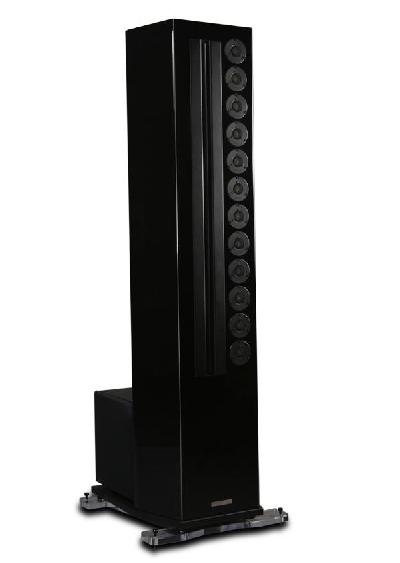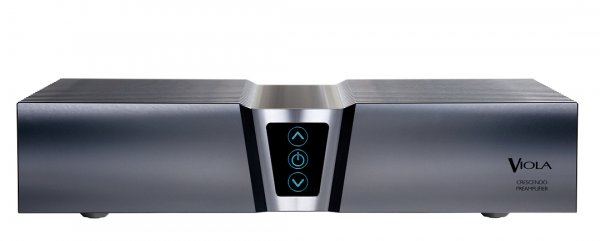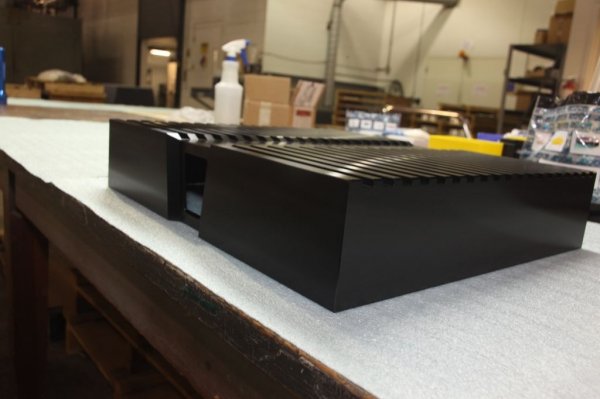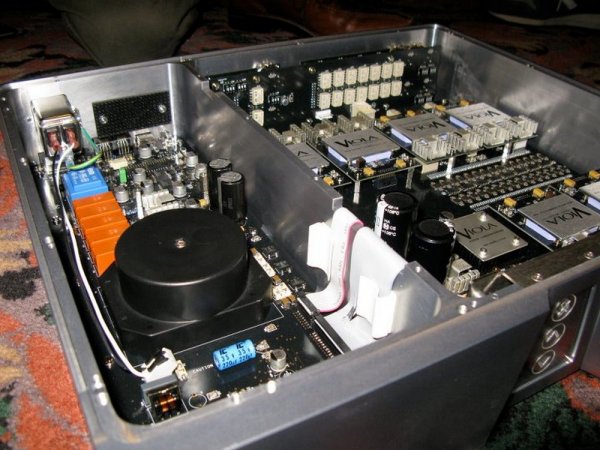Ribbon Line-Source Loudspeaker at CES
Over the past 10 pages, I've talked about the music I'm bringing to the show, and I've talked about the other components we'll be bringing to CES, but I haven't said much about the reason behind why we are showing at CES - our loudspeakers.
When Gregadd brought up the Infinity IRS in another thread,
View attachment 7297
and it brought to mind just why I've been so committed to the technology of ribbon line source loudspeakers.
We don't have the space to bring a 4-tower line-source, so we are bringing the largest that will fit - the G2jr - to The Venetian this year.

When Arnie Nudell designed the Infinity Reference Standard, it wasn't supposed to be a commercial product. It was a proof of concept and an expression of what could be possible for the reproduction of sound when given a blank slate without having to compromise on any design parameters. I wasn't there, but he told me that during the launch in Mike Kay's Lyric in 1977, they had queues stretching around the block waiting to get in to listen to it. Although the last of the IRS was built in 1988, many audiophiles still treasure their loudspeakers. While we cannot support the IRS, we still support our customers who have owned their speakers for nearly 20 years. That's one thing that the other company does well that I'm lousy at - getting our customers to upgrade their speakers every few years. Just last year, I upgraded a customer from an IRS Beta (ribbon but not line source) to the Genesis 2.2 - after over 20 years. And over the years, we've helped our customers keep their 10 - 15 year old speakers working "like new".
So, why do these owners of ribbon line source speakers keep their speakers for so many years.
1) First Reason - overall lower distortion
The line source loudspeaker has a great advantage over the point source (ordinary cone) loudspeaker. The most important of this is that the line source loudspeaker radiates sound as a cylinder. The point source radiates like a cone. This means that when the distance doubles from the loudspeaker, sound pressure level from the line-source reduces by 3dB whereas the point source reduces by 6dB.
In practical terms, when the line source and the point source loudspeaker both have a 90dB/W at 1m sensitivity, at the seating distance of 4m, the line source loudspeaker will be 84dB/W. The point source loudspeaker will be 78dB/W - or about half as loud. The difference grows at greater distances.
Or in other words, to get the same loudness of 84dB seating at 4m (normal loudness normal distance) the line source loudspeaker will be playing at 90dB @1m and the point source will be playing at 102dB @1m.
The line source loudspeaker will be less stressed and less distorted. The amplifier will also be playing at lower power and lower distortion. For Class AB amplifiers, this is very important as it is 4 times more power needed to be twice as loud. The line source loudspeaker will have the amplifier operating more in Class A, the point source loudspeaker will be operating more in Class B.
With the Genesis 2jr, the sound generation is also distributed over 12 tweeters and 48-inches of midrange transducer. The point source often has just the one 1" tweeter and perhaps two 4-inch midranges to handle the signal. Distributing the power across more drivers significantly reduces excursion, and increases power handling and driver/air coupling.
2) Second Reason - better dynamics
Even considering the same power amplifier and playing to the same volume, because less power is needed, the line source loudspeaker is more dynamic. Horn loudspeakers are popular because they sound dynamic when played quietly. This is because horn loudspeakers are very sensitive - 98dB/W or more. At a normal seating distance of 4m, the Genesis line source loudspeaker has almost the same efficiency as a horn loudspeaker - 84dB/W at 4m. It is this sensitivity that gives high efficiency horn loudspeakers great macro and micro dynamics (and hence they are well loved in Asia).
The sensitivity of the Genesis at 1m or 90dB/W reduces to 84dB/W at 4m. The horn loudspeaker with sensitivity of 96dB/W at 1m also reduces to 84dB/W at 4m. Not as high as horns, and certainly not as high as the very high efficiency horn loudspeakers which often have efficiencies of 103dB/W at 1m.
However, the Genesis has the advantage that because of the line-source radiation pattern, the sweet spot is much, much bigger than the horn loudspeaker and often significantly larger than ordinary point source loudspeakers. There are many more positions for the music lover to sit in and sharing the appreciation of music with friends and family then becomes more of a reality.
3) Third Reason - less reflections in-room
The line source radiates sound in a cylinder. This means that the sound does not radiate upwards and downwards. The result of this is that there is no reflections in the midrange to the floor and to the ceiling. There are two major benefits to this - the first is more clarity in voices as there is going to be much less confusing reflections in the midrange from the floor. Often audiophiles remember to treat the first reflection point on the side walls, and then they completely forget to treat the first floor and ceiling reflection points.
Even if they treat the first reflection from the floor, it is extremely impractical to have mid-range absorption on the floor. A carpet attenuates the high frequencies, and in fact may accentuate the midrange and bass reflections.
In a trade show like CES, we don't have the luxury of a purpose-designed room, and this is even more important. An additional advantage of the Genesis loudspeaker is that with the dipole radiation, the side-wall reflections are also reduced and minimized.
4) Fourth Reason - better detail and micro-dynamics
The advantage of the ribbon (actually planar-magnetic) midrange and the ribbon tweeter is that since moving mass is extremely low, micro-dynamic detail is very much better than dynamic drivers. The moving mass of a diamond tweeter is about 30 times more heavy than the ribbon diaphragm of the Genesis tweeter. Because of the inertia of the mass, it takes at least 60 times the power to make the tweeter accelerate at the same rate as a ribbon.
The moving mass of the solid titanium 4-inch midrange of the Genesis 5.3 is more than 40 times the mass of the 48-inch midrange ribbon. Aluminum cones will be 60 to 80 times heavier, and even carbon fiber cones will be 20 to 30 times heavier. (Moving mass includes the entire structure - voice coil, voice coil former, surrounds, spider, etc. plus the weight of the cone)
So, tiny details in the music are much better served with ribbon drivers than with ordinary dynamic drivers.
Even if it were not a Genesis loudspeaker, the line-array or line-source distributing the signal across multiple drivers mean that each driver moves very little relative to a point source loudspeaker. This gives line-array or line-source loudspeakers utilizing dynamic drivers better micro-dynamic detail too.
5) Fifth Reason - excellent for company and doing public demonstrations
Because the line source radiates uniformly along its whole length, the Genesis line speaker sounds the same whether you are 6-foot tall standing up, or sitting down. As long as the ear is from 2 feet to 6 feet from the ground, the loudspeaker will sound the same - you are within the sweet spot vertically.
In The Venetian, this is even more important due to the split-level seating. It is difficult if not impossible to optimize for height with a point-source loudspeaker.
So, for the 10th Anniversary of Genesis Advanced Technologies, and my 11th CES, we are finally bringing a ribbon line-source loudspeaker to The Venetian. With all the music we'll be playing, and the SUPERLATIVE partnering gear, I'm going to have a blast!!










